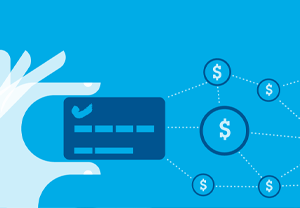Think you have what it takes to catch a scam? Con-Million the Chameleon is back with another installment of the Rascal Report. The scams and amounts lost in the stories below are real, but the names used are not.
 Scammed by Fake Inheritance
Scammed by Fake Inheritance
George, an 82-year-old widower, sat alone in his quiet home when the phone rang.
“George, this is Richard Hall from the International Claims Bureau,” the caller began smoothly. “I’m contacting you about a $2 million inheritance left by your late father.”
George blinked in surprise. His father had died over fifty years ago, but the idea of an unclaimed fortune sparked something in him—hope, perhaps, or just the thrill of possibility. “There’s a small issue, though,” Richard continued. “The funds are held overseas, and we’ll need you to pay $10,000 in inheritance taxes to release them.”
George hesitated but reasoned it might be worth the risk. He had always been careful with money, but this was a once-in-a-lifetime opportunity. His late father had been a frugal man; maybe he had hidden wealth George never knew about.
The next morning, George visited his bank, withdrew his savings, and sent the wire transfer. Days turned into weeks with no further word from Richard. Calls to the provided number went unanswered. It wasn’t until his bank statement arrived, showing his drained account, that the truth hit him like a punch to the gut. George had been scammed.
Sitting in his empty kitchen, George stared at the letter promising a fortune that would never come. He sighed deeply, a mixture of shame and regret welling in his chest. “I should’ve known better,” he muttered. But deep down, he realized loneliness had made him vulnerable, and that stung more than the lost money ever could.
The Problem: The caller was a scammer and successfully gained access to George’s finances.
The Takeaway: If things seem too good to be true, chances are, a loop hole or scam is involved. Be leery when contacted out of the blue regarding winnings or inheritance funds.
 Tech-Savvy Woman Tricked by OTP Scam
Tech-Savvy Woman Tricked by OTP Scam
Nina was a 34-year-old graphic designer who prided herself on being tech-savvy. Her phone was her lifeline—managing projects, emails, and, of course, her banking app. That’s why, when she received a call from an unknown number one afternoon, she answered without hesitation.
“Hello, Nina. This is Vikram from SafeBank’s fraud detection team,” said the professional-sounding voice on the line. “We’ve noticed an unauthorized transaction attempt on your account. Did you approve a payment of $50,000?”
“No, absolutely not!” Nina exclaimed, her heart racing. She clutched her phone tighter.
“Don’t worry,” Vikram assured her. “We’ve blocked the attempt, but we need to confirm your identity to secure your account. You’ll receive a One-Time Password (OTP) shortly. Please read it back to me so we can verify the block.”
Nina’s phone buzzed, and a message popped up: Your OTP for SafeBank is 947361. Do not share this with anyone.“Okay, the OTP is 947361,” she said, her trust in the caller overriding the warning in the message.
“Thank you, ma’am. We’ve successfully secured your account. You should receive a confirmation soon.”
The call ended, and Nina breathed a sigh of relief. But an hour later, when she checked her banking app, her heart sank. $50,000 had been transferred out of her account.
Panic set in. She dialed SafeBank’s customer service line. After explaining the situation, the representative’s tone turned grim. “Nina, that call wasn’t from us. You shared your OTP with a scammer.”
Nina felt her stomach drop. The warning in the message replayed in her mind: Do not share this with anyone.
“How could I fall for this?” she whispered to herself, staring at the empty space where her savings used to be.
As she hung up, a wave of shame and anger washed over her. She vowed to spread awareness of these scams, determined to prevent others from making the same mistake. But for Nina, the lesson had come at a heavy price.
The problem: The caller was a scammer impersonating Nina’s financial institution. The passcode she verified gave the scammer access to her online banking, where they were able to transfer all of her funds out of her accounts.
The Takeaway: OTPs ( One Time Passcodes) should NEVER be shared with anyone. Under no circumstances will anyone ever need to know the OTP that was sent to you. If you are asked for the code, you are speaking to a scammer and need to immediately disconnect the call and call your financial institution directly.
Con-Million the Chameleon Says: Scammers can blend into any situation, making it hard to tell who is truly trustworthy. Many scams start with the victim being promised something too good to be true, like an inheritance or huge winnings. The scammer builds trust over time, asking for money upfront to release the supposed funds. Before you know it, your savings are gone, and you’re left with nothing but regret.
Always be cautious when contacted out of the blue, especially regarding inheritances or unexpected financial opportunities. Do thorough research before transferring funds, and never let your guard down, no matter how convincing someone may seem.
Just because a company is legitimate doesn’t mean the person you’re speaking to is. Scammers often impersonate legitimate businesses, using tools like legitimate money transfer services or even OTPs (One-Time Passcodes) to trick you into giving them access to your finances.
Here’s what to remember:
- Don’t share your OTP with anyone, not even if they claim to be from your bank or financial institution. They are NEVER required to ask for it.
- Never send funds to someone who contacts you out of the blue, claiming an urgent need for money, such as to “release” inheritance funds.
- Legitimate businesses will never ask you to install screen-mirroring software, nor will they request “test payments” to troubleshoot account issues.
When in doubt, hang up and contact your bank or service provider directly using the contact information from their official website.





